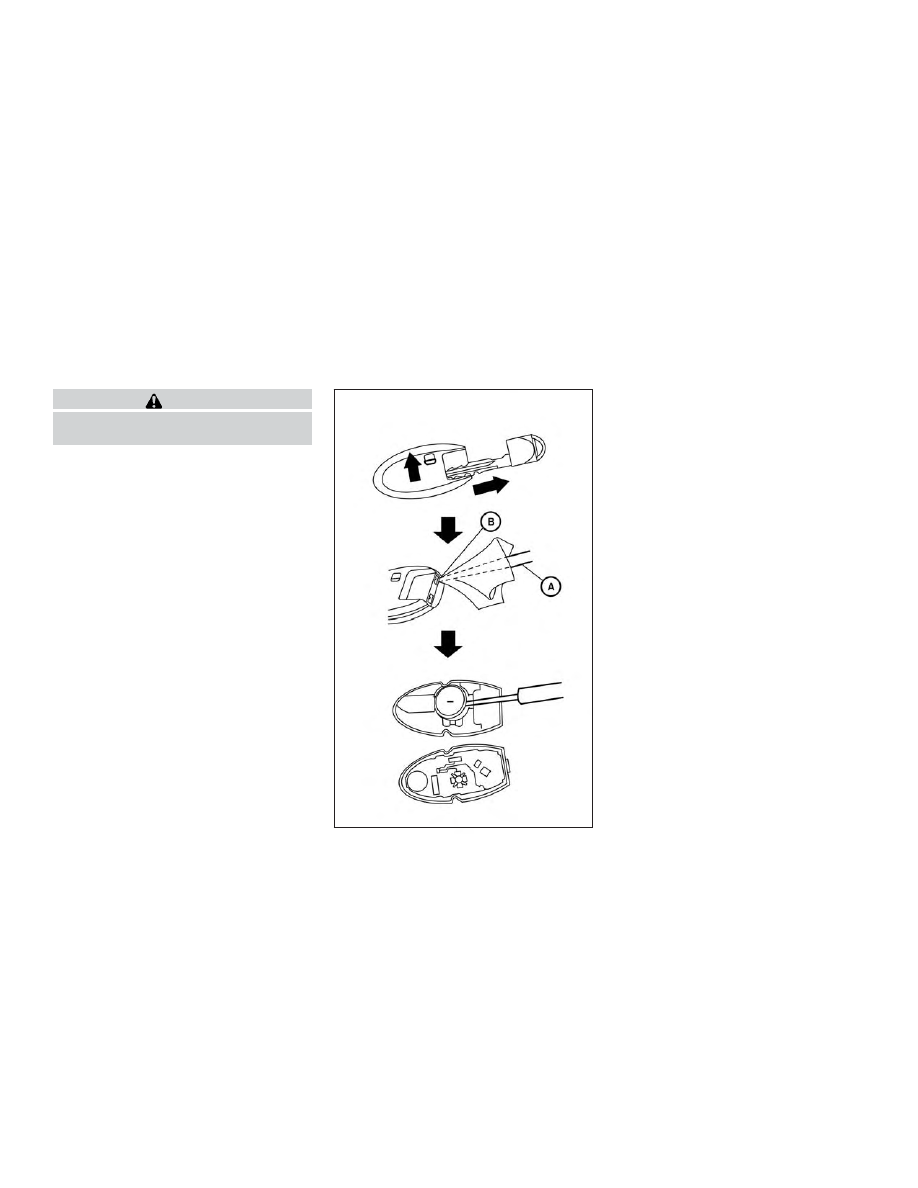Nissan Maxima (2018 year). Instruction - part 23

CAUTION
Be careful not to allow children to swal-
low the battery or removed parts.
NISSAN INTELLIGENT KEY®
Replace the battery in the Intelligent Key as
follows:
1. Remove the mechanical key from the
Intelligent Key.
2. Insert a small flathead screwdriver
䊊
A
into the slit
䊊
B
of the corner and twist it
to separate the upper part from the
lower part. Place a cloth over the
screwdriver to protect the casing.
LDI2001
BATTERY REPLACEMENT
Do-it-yourself
8-21